Owen Gun: Down Under’s Upside Down SMG
February 21st, 2023
6 minute read
Things are just different in Australia. Many of their mammals are unique to the continent and sport weird pouches they use to raise their young. Additionally, their snakes seem all to be just super deadly. And then there’s the platypus. What’s that all about?
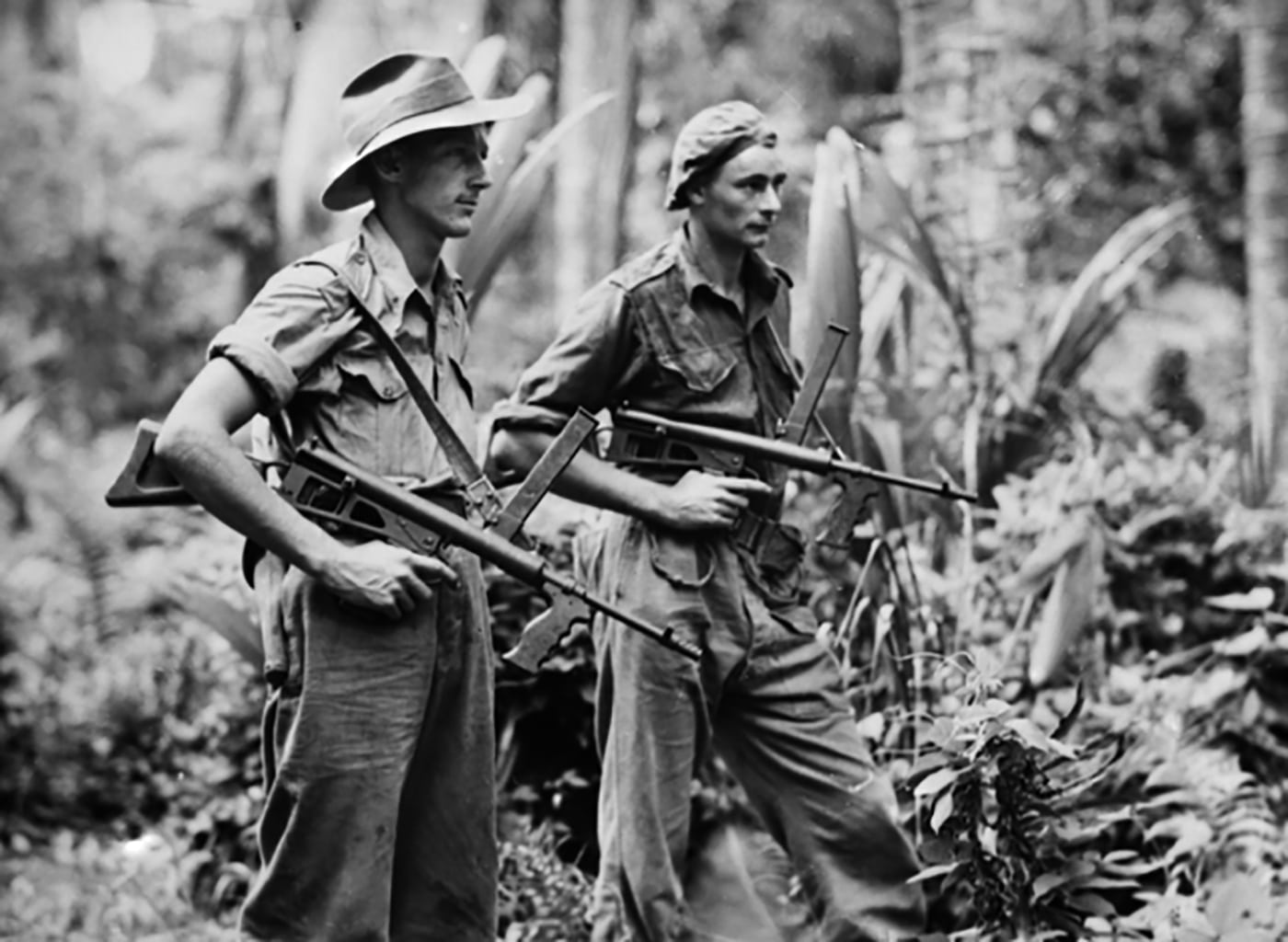
Apparently, all that intrinsic “Down Under” strangeness extends to their small arms as well. Back during WWII when gun designers were crafting such conventional weapons as the German MP-40, America’s M-3 Grease Gun, the Russian PPSh, and the British Sten, an Aussie named Evelyn Owen crafted an upside-down SMG that ultimately took his name. The Australian Owen was unique among the pantheon of wartime SMGs, as it fed 9mm rounds from the top — among other quirky features.
Origin Story
Evelyn Ernest Owen was born in 1915 in Wollongong, New South Wales. He finished high school, but did not otherwise much take to formal education. He did, however, have certain natural mechanical proclivities. By 1938 he had developed a submachine gun design that fired .22 LR. He approached the ordnance officers at Victoria Barracks in Sidney, but they showed little interest. The Australian Army at the time was operating on the British model and had scant use for submachine guns. Their combat tactics orbited around massed rifle fire and heavy machineguns.
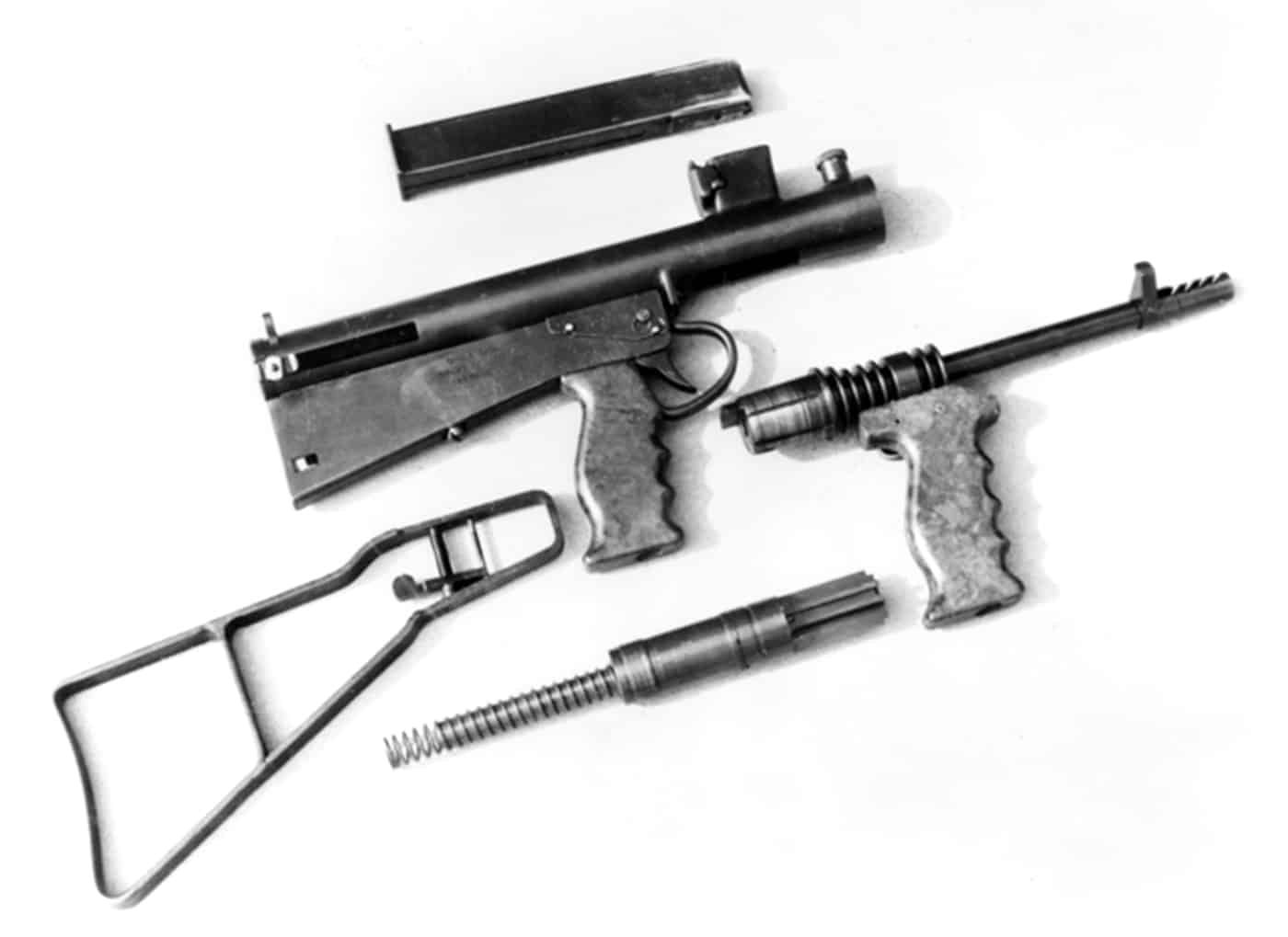
Disappointed, the young Mr. Owen enlisted in the Australian Army. Just before he was to deploy to the Middle East, Owen met Vincent Wardell, the plant manager for a manufacturing concern in Port Kembla called Lysaght’s. Though they had no experience building weapons, Wardell discussed the project with Essington Lewis, the owner of the company. Intrigued, Lewis used his influence to have Owen temporarily exempted from his military service and seconded to the plant for development of the weapon.
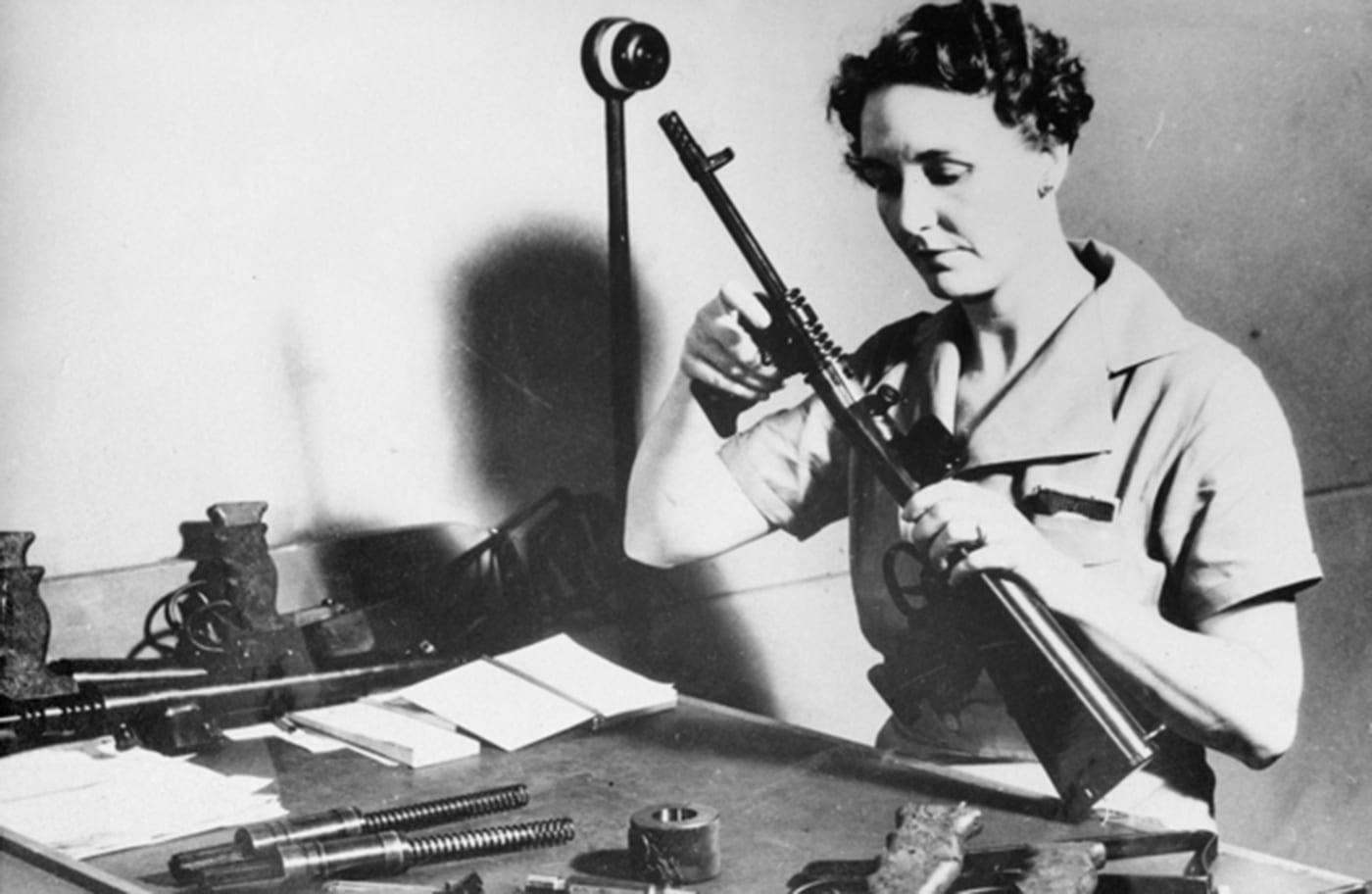
Owen adapted his rimfire design to fire .32 ACP and then .45 ACP before settling on the 9mm. By 1941 with war clouds looming on the horizon, the Australians were warming to the idea of SMGs. However, they were already in the pipeline to receive British Stens. Percy Spender, the Minister for the Australian Army, nonetheless ordered 100 copies of the Owen as a speculative venture.
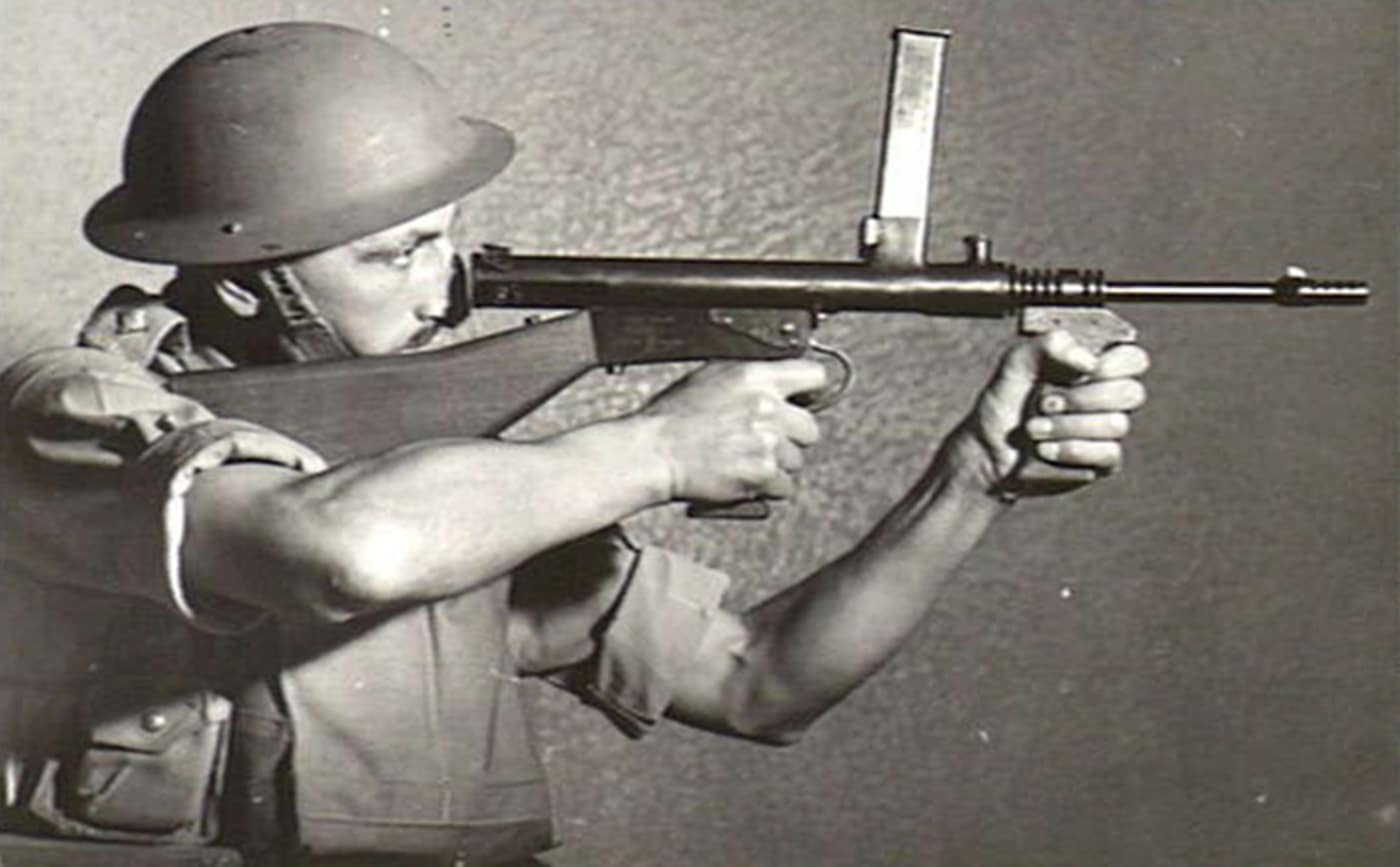
By the summer of 1941, Owen was formally released from his military obligation so he could work on his gun full-time. The weapon was field-tested alongside the American Thompson, the British Sten and the German Bergmann. In water, mud and sand tests, the Owen was found to be the most reliable of the lot. As a result, that first order was increased from 100 copies to 2,000. Australian industry tooled up to mass produce the weapon soon thereafter.
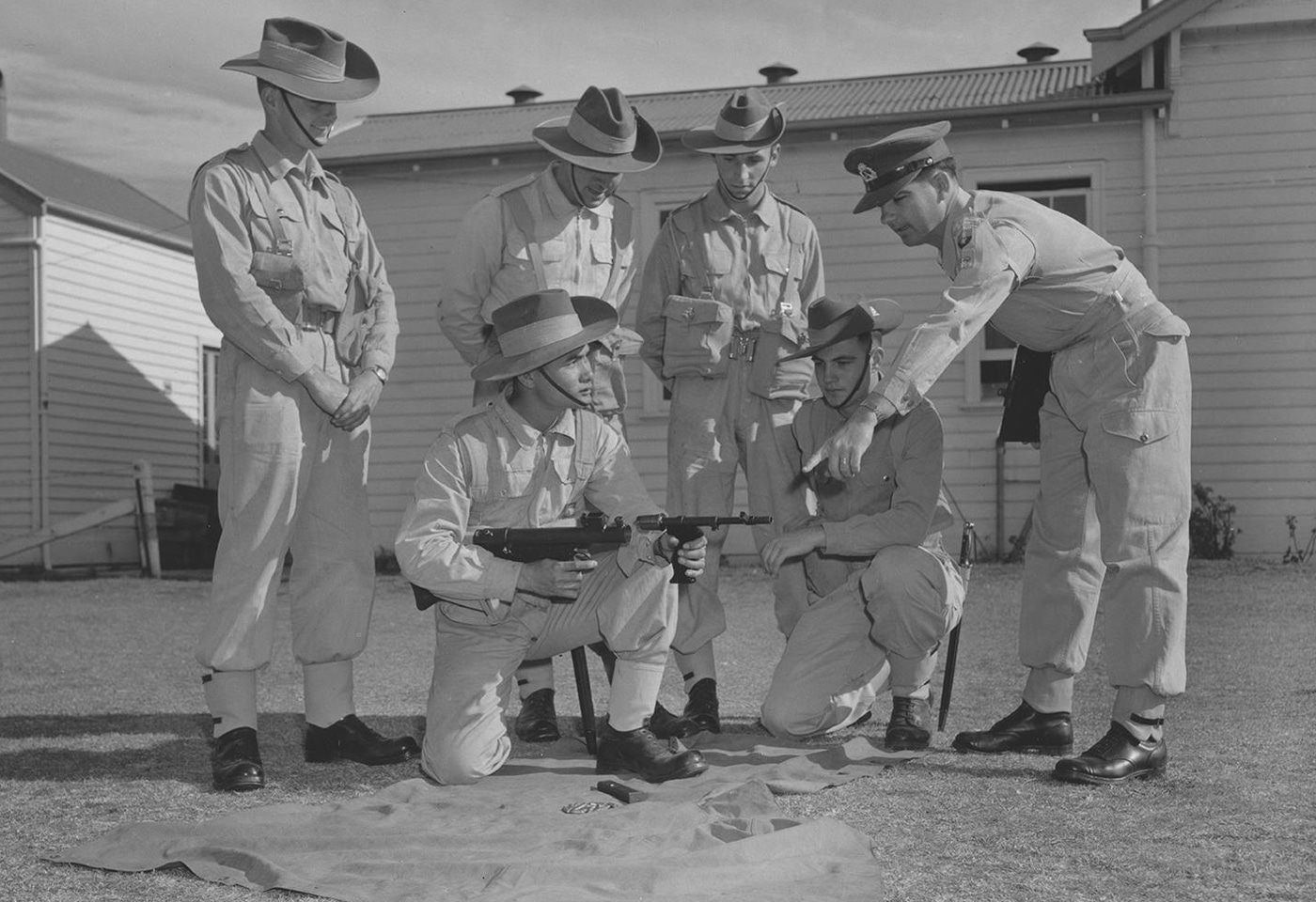
Details
The Owen was a conventional submachine gun quite unconventionally executed. As Evelyn Owen had little formal schooling and no experience designing weapons, he approached the project without preconceptions. This fresh unspoiled take resulted in a shockingly reliable design.
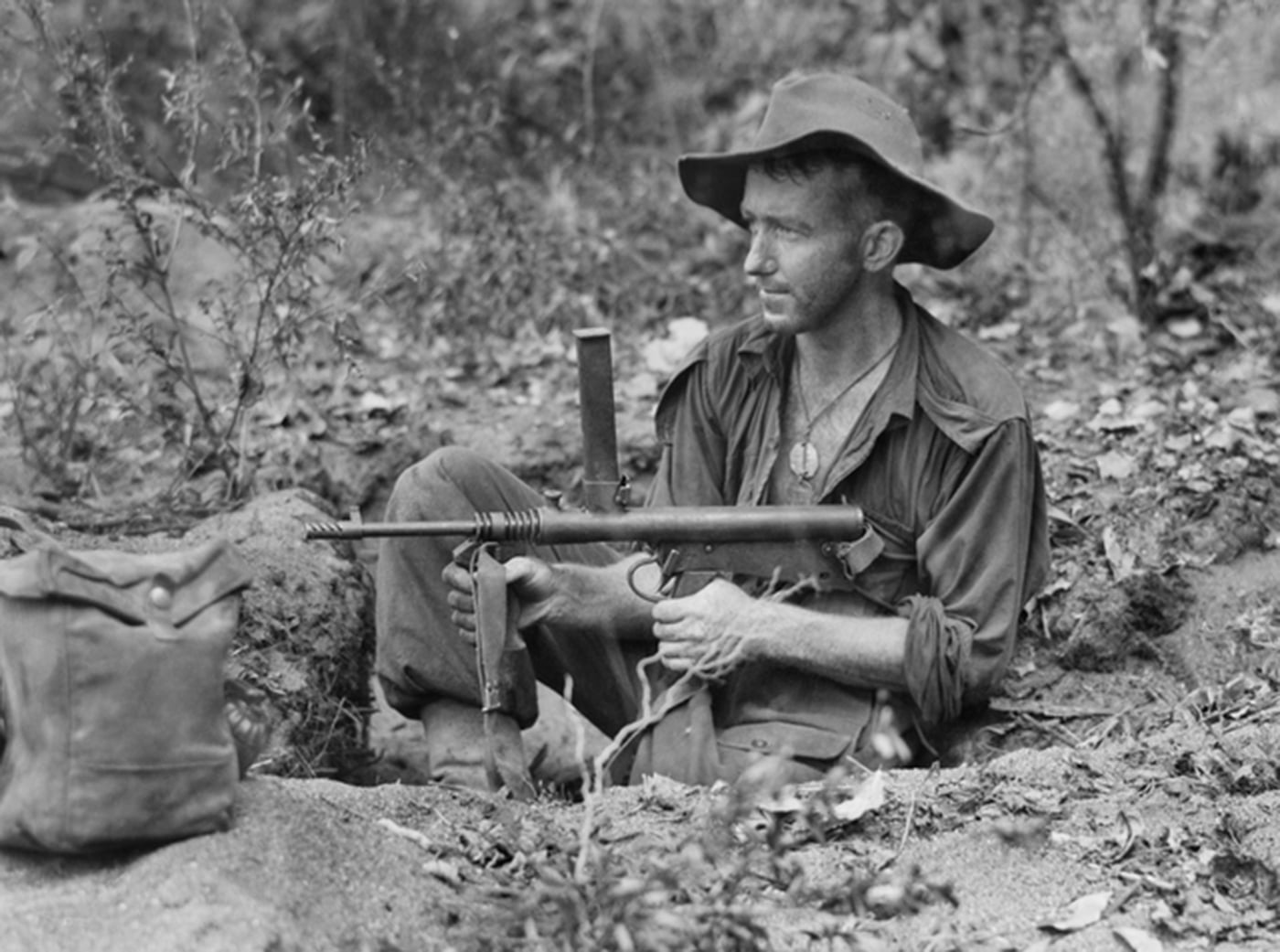
The most radical aspect of the Owen’s design was that it fed from the top. The gun’s detachable box magazine carried 33 rounds of 9mm ammunition. This unusual orientation allowed for gravity to assist in feeding rounds into the weapon. It also facilitated easier firing from the prone. As a result of the top-mounted magazine, the gun’s sights were offset to the left for access by right-handed shooters. Left-handed people were just screwed, but we should be used to that by now.
The Owen fired from the open bolt by means of a fixed firing pin milled into the bolt face. The drawn tubular steel receiver incorporated a smaller internal tube that helped keep crud away from the bolt and improved reliability. Oddly, the ejector was built into the magazine rather than the weapon itself. This facilitated easy removal of the barrel for disassembly or maintenance. The simple wire buttstock was removable but did not fold or collapse.
Practical Tactical
The Owen gun developed a well-deserved reputation for reliability that made it popular with Allied troops operating in the fetid jungles of the South Pacific. The Aussies affectionately referred to the gun as the “Digger’s Darling,” with “digger” being a slang term for soldiers in Australia. New Zealand troops fighting in Guadalcanal and the Solomons binned their Thompsons in favor of Owens for their improved reliability. General Douglas MacArthur was so impressed with the weapon that he investigated the possibility of sourcing the gun for use by American troops in theater.
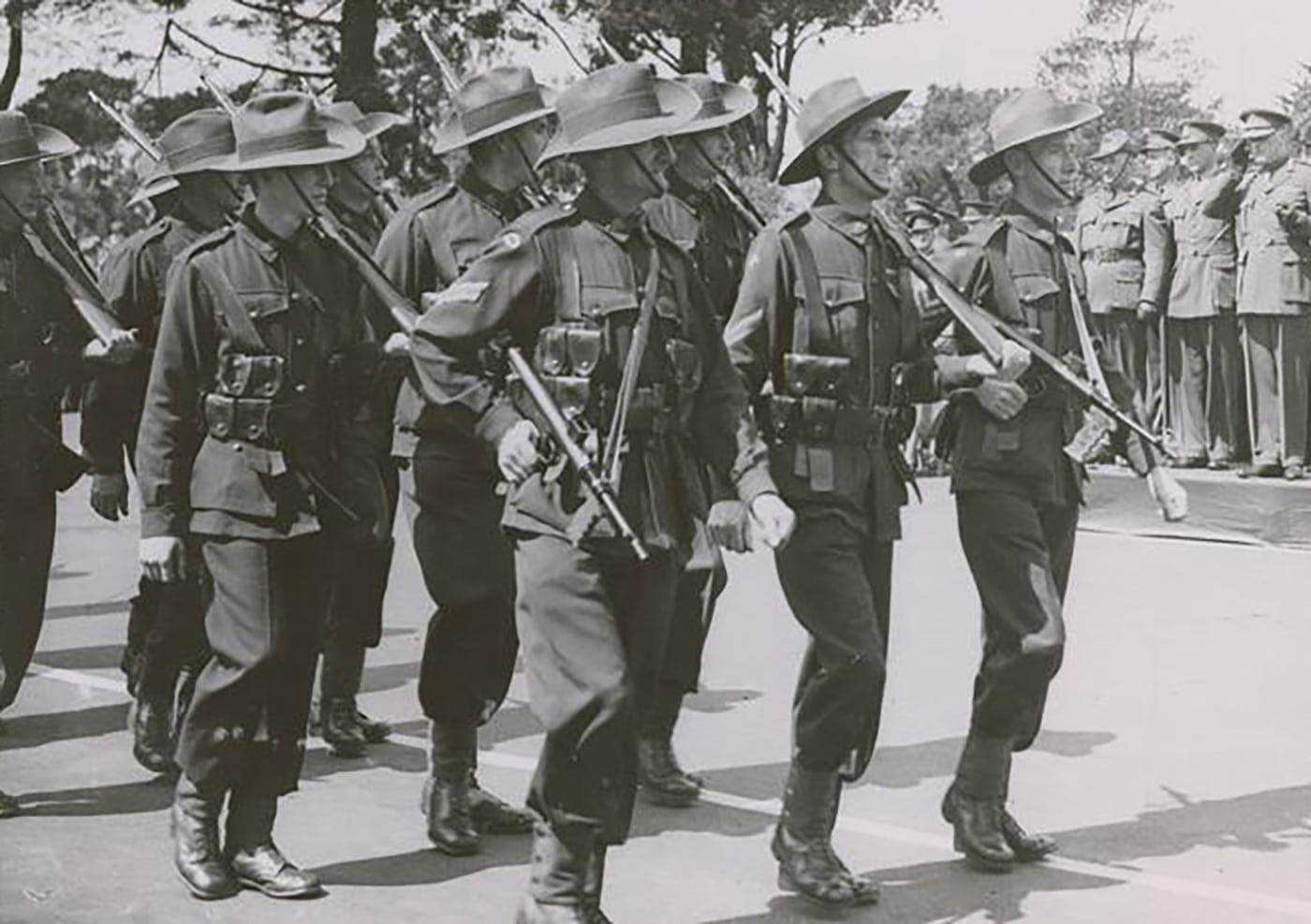
The Owen gun required a unique manual of arms, and it was heavy at 9.33 lbs. empty. With a fully-charged 33-round magazine, the gun tipped the scales at a whopping 10.7 pounds. However, this impressive weight combined with the weapon’s 700 rpm rate of fire and modest 9mm chambering made it exceptionally controllable. For the sorts of desperate close range engagements that defined the Pacific theater, the Owen gun was superb.
The Rest of the Story
By war’s end, the Australians had produced some 45,000 Owen guns. The price at the time ranged from $24 to $30 apiece. That would be about $516 today. Production of the Owen wrapped up in 1944.
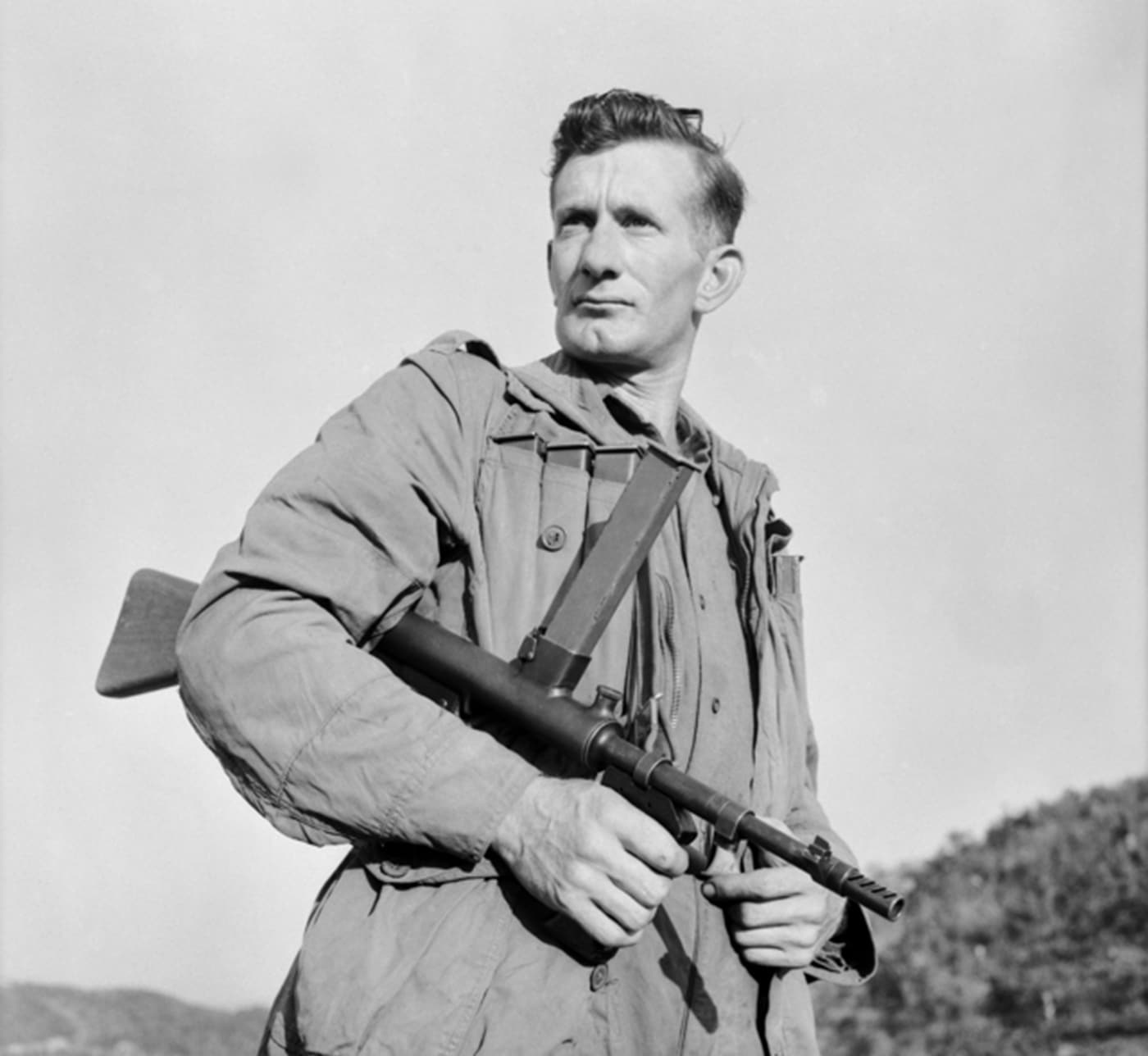
The Owen remained in service with Australian troops through both the Korea and Vietnam Wars. The weapon was not retired until 1971 when it was supplanted by the Australian F-1 SMG, a subsequent more advanced top-feed 9mm design.
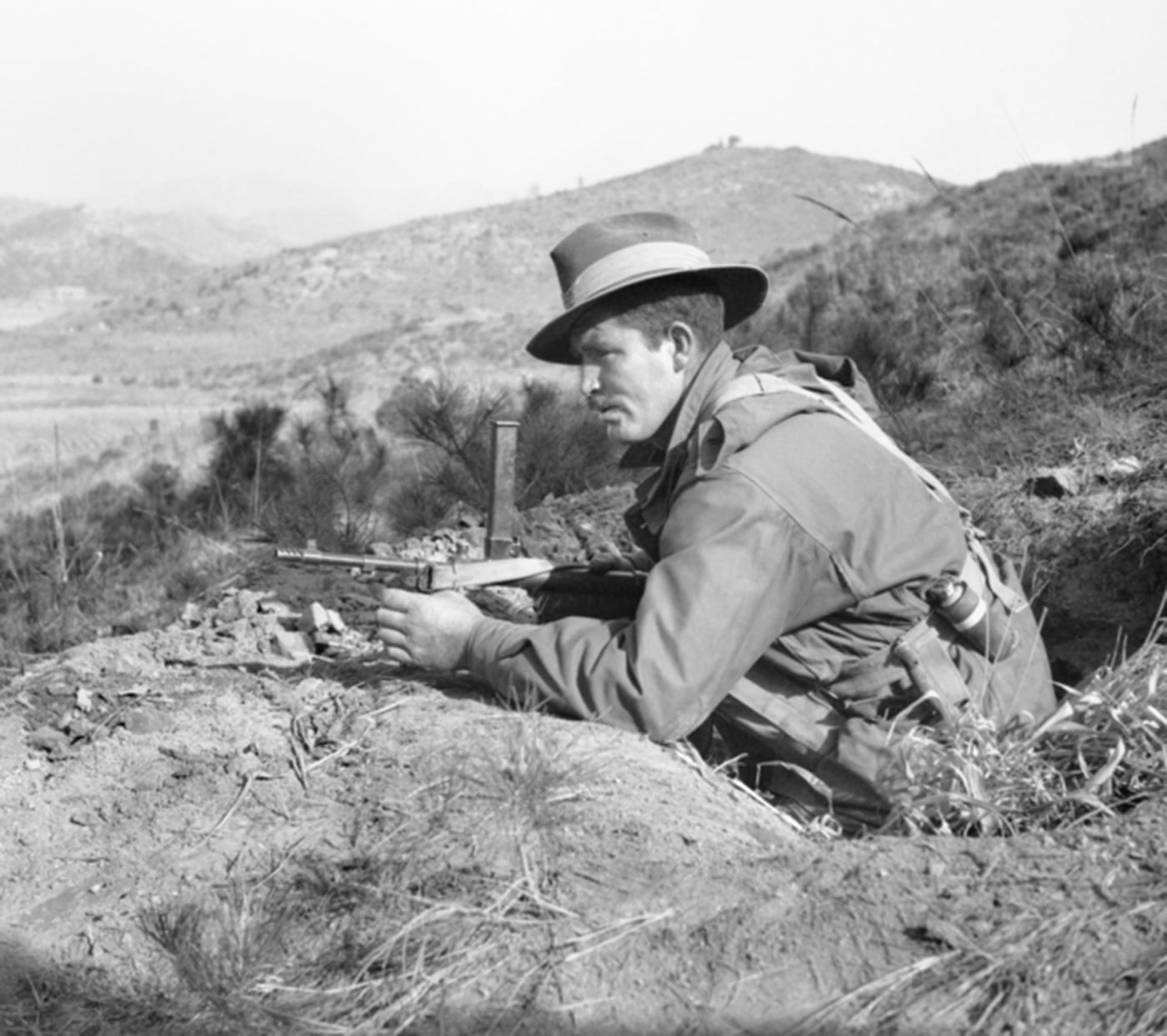
The Owen gun design was patented in 1943, and Evelyn Owen received a small royalty for each gun produced. He eventually sold the patent rights for the weapon to the Australian government. All totaled he made about £10,000 off of the Owen gun design.
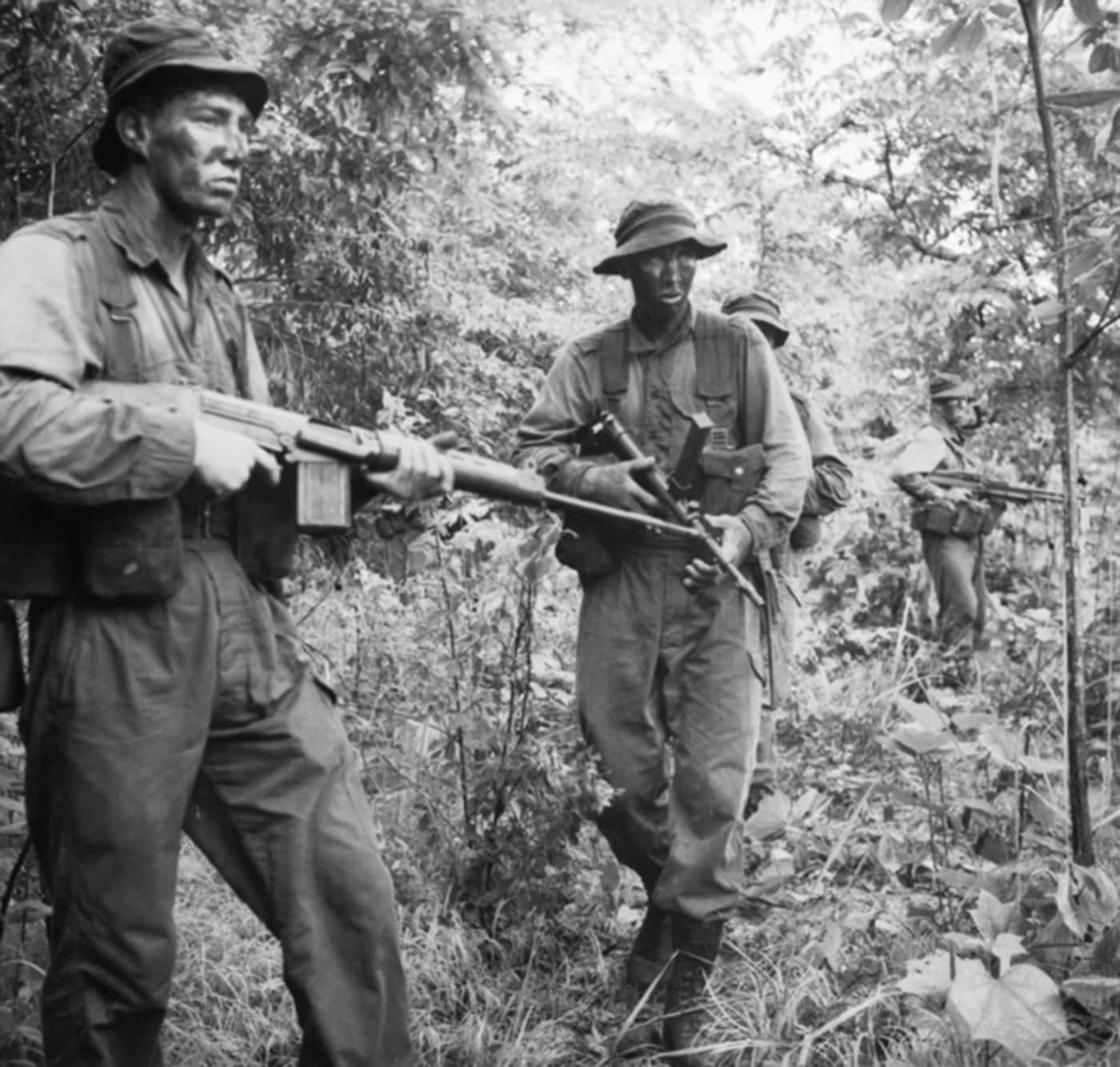
Evelyn Owen took the money he made from his eponymous subgun and opened a sawmill near his hometown of Wollogong. With the war over he continued experimenting with firearms, most commonly sporting rifles. However, there was not a happy ending to be found here.
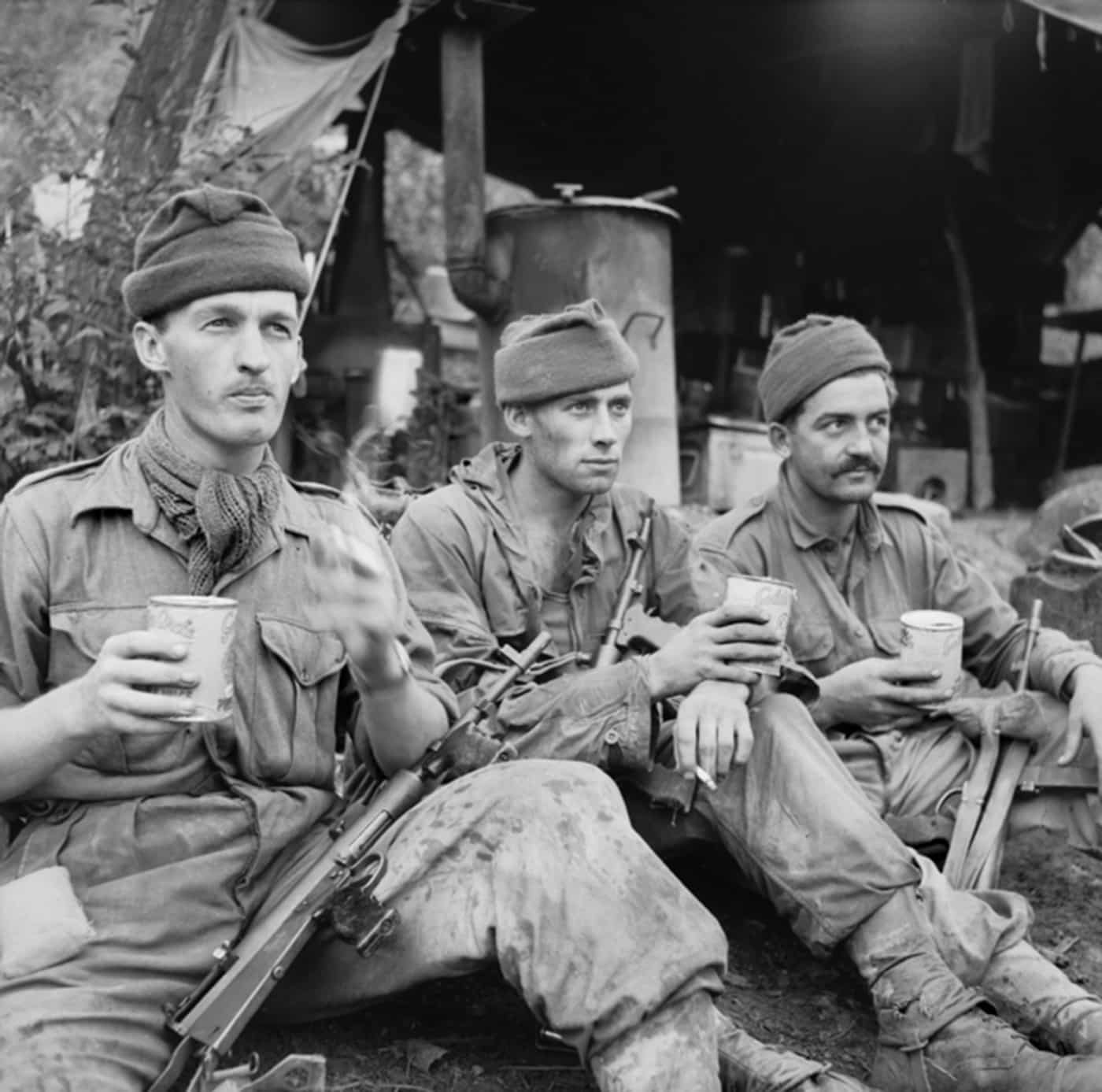
Evelyn Owen liked to drink and is said to have done so in excess. He eventually developed a gastric ulcer that hemorrhaged in April of 1949. Owen subsequently bled out and died at the young age of 33. The gun he designed, however, would be his legacy, helping save his nation from tyranny.
Editor’s Note: Please be sure to check out The Armory Life Forum, where you can comment about our daily articles, as well as just talk guns and gear. Click the “Go To Forum Thread” link below to jump in and discuss this article and much more!
Join the Discussion
Continue Reading
Did you enjoy this article?

 355
355






